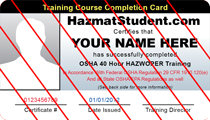| Hitting a Nerve | Awkward Postures |
Working with an awkward posture can put stress on the body by increasing the exertion needed to complete a job. The function of nerves, tendons, blood vessels, and muscles can all be impacted by awkward postures. In addition to causing fatigue and injury, working in awkward positions often reduces work quality and lowers productivity.
Any body position that significantly differs from a neutral body position can cause stress to the body. Examples of awkward postures include working while:
- Body parts are twisted.
- Body is in a squatting or kneeling position.
- Neck is bent.
- Back is bent.
- Wrist is bent.
- Arms are raised above the head.
- Arms are reaching out.

Once you become aware that you are working in an awkward position, look for safer ways to get the job done and relieve the stress on the body. If the positions can’t be avoided or changed, simple modifications to lessen the impact can also quickly reduce your risk of injury. Below are some ways to reduce the need for awkward working postures and reduce injury:
- Ensure your working surface is at the proper height to enable a neutral body position.
- Use special lifting tools to prevent the need to bend over.
- Use ladders or stools when needed to avoid over-reaching.
- Use tools for the job that will minimize awkward positions.
- When working in an awkward posture:
- Change your position frequently.
- Take frequent breaks.
- Stretch prior to and during the task.
- Break the job into smaller segment that can be completed over time.
The biggest obstacle to eliminating awkward postures is awareness. Once you feel discomfort performing a job, it is a red flag that there is stress being placed on the body. Pay attention to the cues your body is giving you and take steps to eliminate or reduce awkward postures to lessen your risk of injury.



